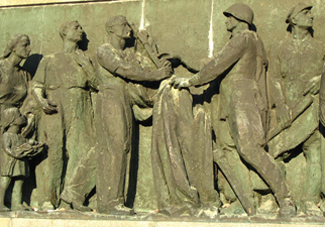1.2 Autonomy
An important component of the modern concept of art – one that has been subject to considerable critical debate, positive and negative alike – is that of art’s ‘autonomy’.
At its most basic, this is the idea that art is an independent practice: that it does not, or should not, have to be validated by political, religious or moral criteria.
This is not to claim that art should not be ‘about’ anything, but that it does tend to set its own agenda, and has to be judged for how it stands up as art, rather than for its political or ethical probity. In one sense, of course, that is merely to push the problem back a stage: it begs the question of what to judge something ‘as art’ means. But the point here is merely to see some of what it does not mean in modern cultures: it does not mean that a work of art has to be morally upright, as it might have been for a Victorian; nor that it has to exhibit a ‘correct’ political tendency as it might for a Stalinist (Figure 2).

This whole question is hedged around with difficulties, of course. The type of twentieth-century art known as ‘Socialist Realism’ was denied the status of legitimate art in the West during the Cold War, and instead was regarded as propaganda for the Communist states that promoted it. This at the same time as ‘autonomous’ art was promoted as symbolic of Western freedoms. Similarly there is no question that the cultural products we call ‘Renaissance art’ were variously in the service of the Church or the prince; or indeed that the ancient ‘art’ in Nebamun’s tomb-chapel was propaganda for the ideal world view of a social elite.
